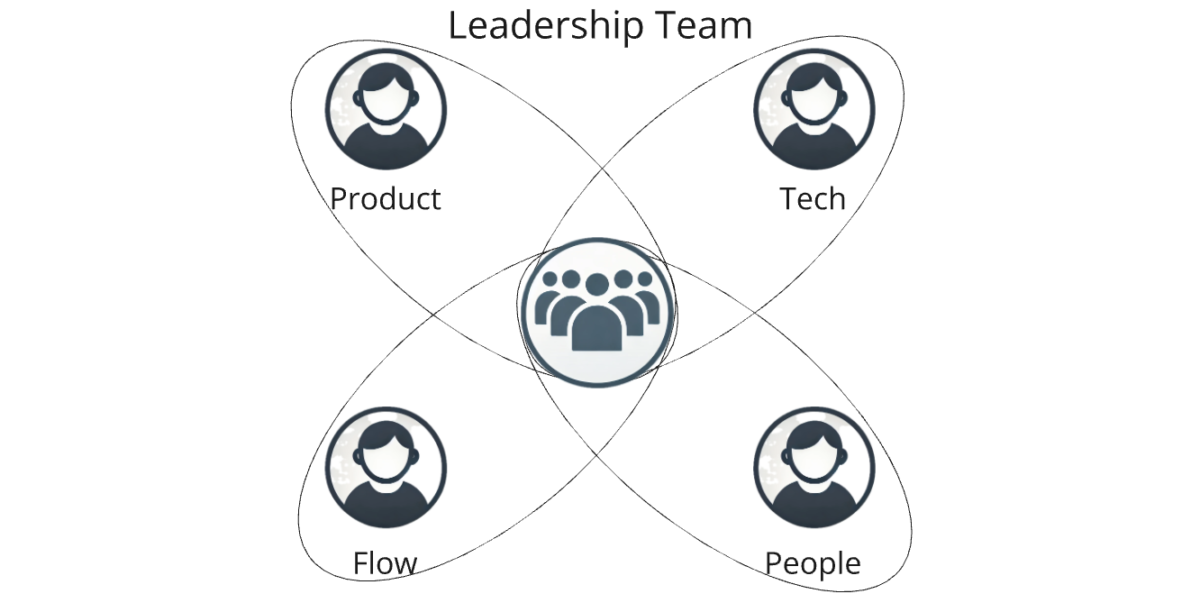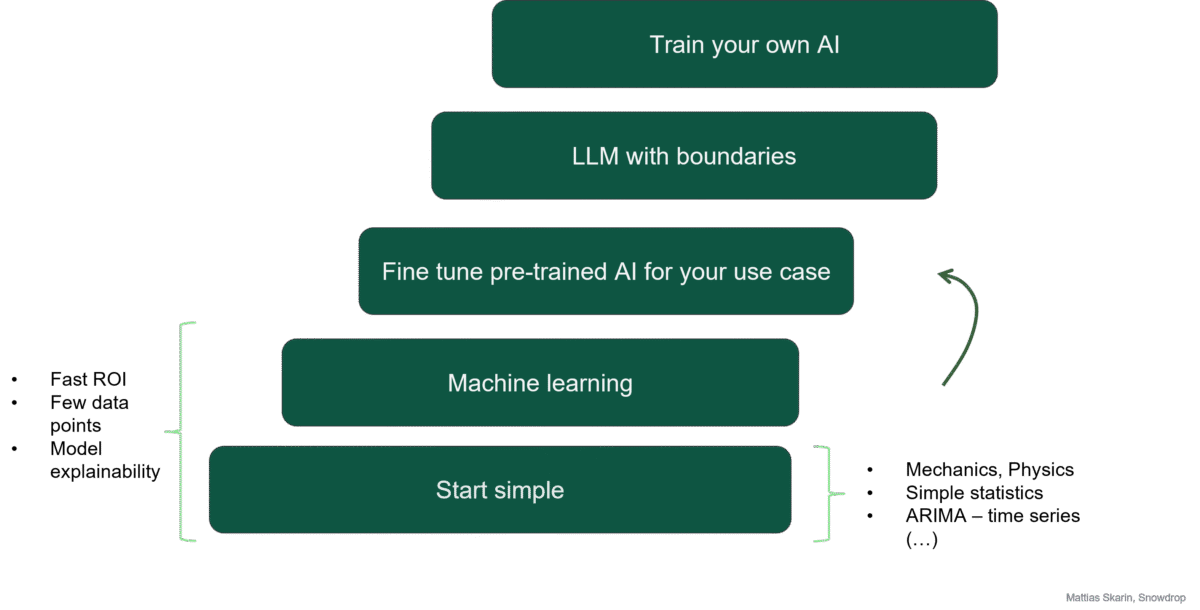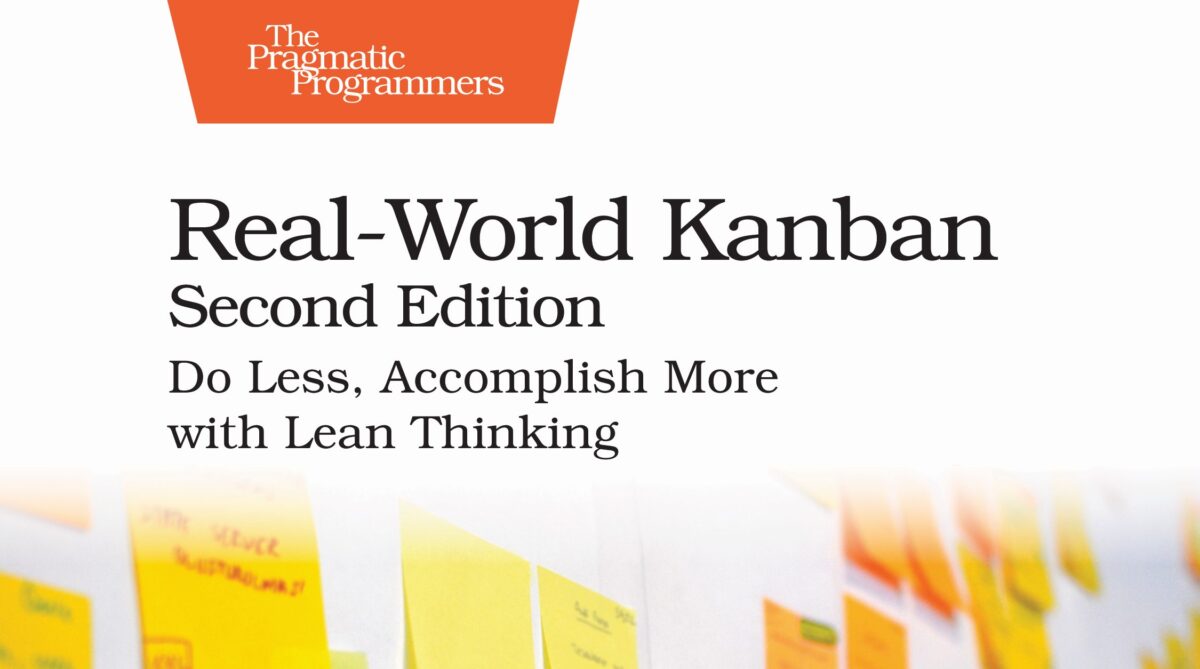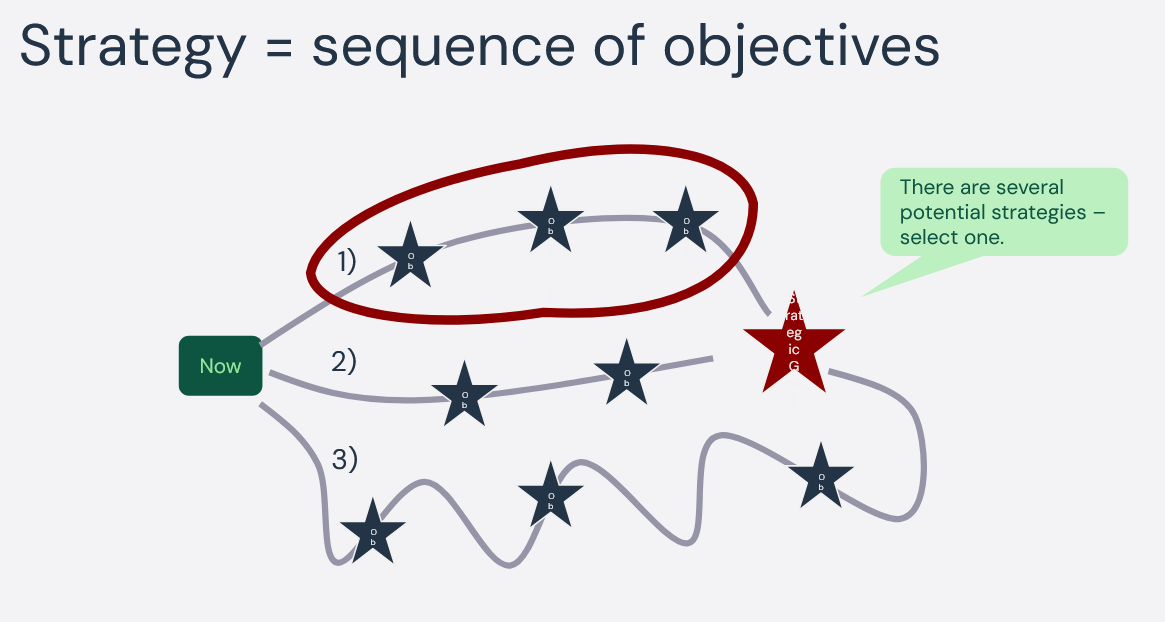While leadership remains essential, the teams don’t have complete autonomy, especially as the organization scales beyond a single team.
Leadership Team Structure
One effective model I’ve used is to organize leadership itself into a team, a true “leadership team,” not a “management group” (for more on the distinction, see this article: Managing Dependencies in Product Development). In contexts where there are multiple teams aligned toward a common goal or product area, a leadership team offers essential support, coordination, and guidance. Often, these teams share overarching goals and outcomes, so a leadership team helps set the direction and ensures alignment across functions. The leadership team should represent the diverse competencies needed to support other teams’ success. This might involve setting direction, facilitating communities of practice, or identifying and addressing gaps.
The leadership teams I’ve worked in have included four key perspectives: Product/Business, Tech, Flow, and People.
• Product/Business: This area provides and maintains the product vision and mission, ensuring all teams understand the bigger picture and their individual contributions within it. It also incorporates business responsibilities, focusing on generating profit from the product and driving the product strategy.
• Tech: The tech perspective ensures alignment in the tech stack and overarching architecture, adapting it to the evolving product needs. This role also manages tech debt and explores new technologies for improvement, forming the tech strategy.
• Flow: This perspective establishes clear, efficient workflows within and between teams, addressing bottlenecks and ensuring a cohesive operating model.
• People: The People perspective is responsible for having the right talent with the right skills in the right roles. This includes fostering team member growth, supporting recruitment, and driving the employee strategy.
Together, these strategies combine to create a unified strategy for the company or department.
These perspectives do not necessarily need to be represented by four separate individuals; a single perspective can be covered by one or more persons
The Importance of Distributed Strategies
Strategies are essential for organizational success, but only if they’re effectively communicated, understood, and executed across the organization. Otherwise, there’s a risk of creating what my colleague Jan Grape refers to as an “Air Sandwich”—two layers of vision and strategy with nothing substantial in between.
One of the biggest challenges companies face is bridging the gap between high-level aspirations (vision, mission, strategy) and day-to-day operations. I’ve often seen a disconnect where leadership and frontline teams struggle to understand each other’s perspectives.
To bridge this gap, leaders must work closely with operational teams. Embedding a leadership team within a team-centric model fosters understanding of real-time activities and challenges. Additionally, that “air” in the sandwich must be filled with context—providing teams with clear direction and rationale. Only when teams truly understand the vision will we fully harness the potential of multiple teams working together toward shared goals.




